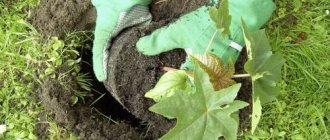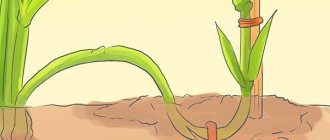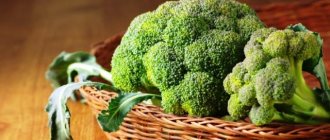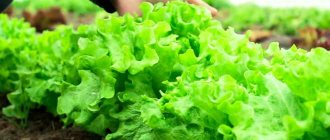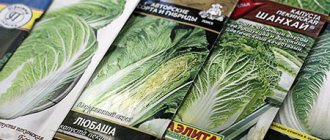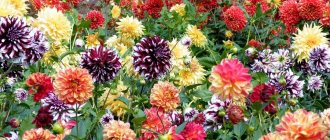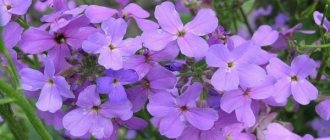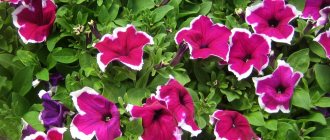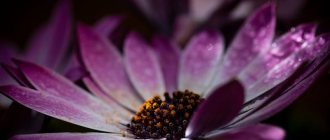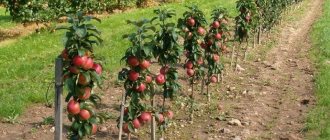The flower is native to South Africa and Australia. Despite its tropical origin, helichrysum has firmly settled in our gardens. It easily adapted to the dry, loose soils of central Russia and received many popular names: “Immortelle”, “Tsmin”, “Cat’s Paws”. Translated from Greek, Helios chrysos means “golden sun”. The bright color of the buds looks advantageous in late autumn, when most of the flowers have already faded. When dried, they retain their appearance for several years, which is why they are often used for making winter bouquets. The plant is widely used not only in landscape design, but also in folk medicine.
Description of the plant
In total, there are 500 species of helichrysum in nature, and only 30 are used in gardening. These are perennial and annual plants of the Asteraceae or Asteraceae family. The root system is fibrous, branched, but not very pronounced. The stem is erect, spreading, with ribs. Depending on the type, the height of the plant ranges from 30 to 120 cm. Like the stem, the leaves are covered with white fluff. The leaf shape is lanceolate, narrow, from 3 to 7 cm in length. The arrangement on the stem is alternate. The inflorescence has the shape of a basket, with characteristic dry petals up to 7 cm in diameter. The inflorescences are painted in a variety of colors. There are white, pink, crimson, all shades of yellow and red. The exception is blue. After flowering, an achene fruit with a tuft is formed.
Medicinal properties of immortelle and use in folk medicine
One of the types of Helichrysum Italicum - angustifolia Tall Curry - Italian immortelle has a strong spicy odor, which is why it is called the curry plant. The oil obtained from its flowers by steam distillation is used for medicinal purposes. It has anti-inflammatory, antifungal and astringent effects, soothes skin itching, promotes the healing of cracks and burns. It is added to perfume compositions to impart a spicy aroma. The dried leaves of this species are used as a spice.
Although Italicum is called a curry plant, it has nothing in common with true curry and is not added to Indian dishes. Its resinous, bitter aroma is more reminiscent of wormwood. In the Mediterranean (the homeland of the species), young leaves and shoots of Italicum are stewed along with vegetables, meat or fish.
Sandy cinnamon has medicinal properties. It is harvested at the beginning of flowering, when the side baskets have not yet blossomed. The raw materials are dried at a temperature of 40 degrees.
In folk medicine, the plant is used in the treatment of diseases of the liver, pancreas, intestines and other organs of the digestive tract. Cmin preparations should not be used by people with bile stagnation in the liver. The plant can increase blood pressure, so hypertensive patients cannot be treated with it for more than 3 months in a row.
Healing properties of immortelle:
Types and varieties
In the gardens of the middle zone, such an unpretentious species as Helichrysum Pink Porcelain is popular. It grows up to 20 cm in height and has a bud diameter of about 3 cm, the color is pale pink. Very resistant to weather conditions and continues to bloom until October. Among the tall varieties, Silver Rose is very popular. The height of the plant is about 70 cm, the inflorescences are colored pearlescent, white and pink.
Helichrysum selago
An unusually shaped annual species native to New Zealand. Creeping stems are covered with small green leaves collected in whorls. Each stem ends in a thyroid inflorescence of white or light yellow color.
Helichrysum selago
Helichrysum petiolate
Varieties such as Helichrysum Chereshkovy are grown for their beautiful silver-gray pubescent leaves. Long stems, about one meter, are covered with oval or rounded leaves. The flowers are inconspicuous, gray-yellow, small. It is easily propagated by cuttings, but the seeds in the middle zone do not have time to ripen.
Helichrysum petiolate
Helichrysum terry
A common garden species, growing up to one meter in height. Approximately 25 inflorescences with a diameter of up to 7 cm are formed on one plant. Often found in a mixture of multi-colored inflorescences. Used for making bouquets.
Helichrysum terry
Diseases and pests
Almost all helichrysums in cultivation are considered unpretentious, strong and resistant to many pests and pathogenic bacteria. In addition, botanists have noticed that helichrysum is miraculously able to heal other flowers and garden crops growing near it.
The most dangerous insects for immortelle may be:
- burdock caterpillar;
- aphid.
They eat leaves and damage the stems of young and mature plants. The fight against aphids or caterpillars is carried out using systemic drugs. Perennial helichrysum can get sick with “white rust,” which most often appears on the leaves. They get rid of it using a solution of Bordeaux mixture (1%).
Dried helichrysum flowers
Among dried flowers, helichrysums are the most common in our gardens. A few years ago they went out of fashion. In recent years, they have returned to our gardens, and arrangements of bouquets in the “country”, “rustic” and “Provence” styles have resumed. For bouquets of dried flowers, choose plants that have not reached the peak of flowering. Strongly blooming inflorescences ripen as they dry and scatter into seeds. Immortelle flowers are dried in a dry, dark, well-ventilated room, collected in small bouquets, which are hung with the inflorescences down. Dry helichrysums are used for bouquets and panels.
Helichrysum in landscape design
Helichrysum bract is most often used in landscape design. It is combined with cereals and other dried flowers, as well as with antirrinum and rudbeckia.
Helichrysums are suitable for planting in hanging pots and tubs.
Compact varieties are used for flower beds, borders, ridges, rock gardens, and rakaria. They land between rubble and stones. They are combined with rhizomes, low-growing iberis, lobelia, ground cover eschscholzia, aubrieta, and sedum.
In one flowerbed, flowers are combined with lavender, thyme, St. John's wort, rosemary, chamomile, and sage.
Helichrysum not only decorates flower beds, but also looks beautiful in fresh and dried bouquets.
Inflorescences are cut at the beginning of flowering. Dry flowers in a dark, ventilated, dry room. Before drying for 12 hours, the inflorescences are fumigated with sulfur. After this they will fade a little, but after drying they regain their original color and become bright. Collected bouquets of 12-15 pieces are hung with the inflorescences down. Dried flowers are used for bouquets and panels.
Dried flowers amaze with their bright colors, their petals resemble silk. They retain their original beauty for up to 4 years.
Care
Helichrysum flower is hardy and unpretentious. To obtain abundant flowering, it is necessary to fertilize the soil several times with special fertilizers for flowering plants or compost. Fertilize the first time during planting, then repeat twice a month. Watering is moderate, without stagnation of water. Large varieties are often pinched.
Helichrysum seedling care
Propagation by seedlings will speed up the flowering of the plant. Seeds are planted to a depth of 0.5 to 1 cm and covered with glass or film. The soil should be kept moist all the time and the lighting should be good. The first shoots appear on the 12th day. From this moment you can begin hardening the plant, opening the bag first for an hour, then for the whole day. Stronger plants are planted in separate pots, this happens on days 14-16.
Bloom
Species grown in seedlings begin to bloom as early as July. Planted in open ground, the seeds bloom no earlier than August. The flowering period is very long, until frost. After the end of the growing season, thanks to its hard and dry petals, the plant retains its decorative appearance for a long time.
Planting and propagation
There are annual and perennial varieties. Annual plants are propagated by seeds, while perennials are propagated by cuttings and dividing the bush.
Timing for sowing dried flowers for seedlings
Seeds for seedlings begin to be sown already in March, and by May, stronger plants can be planted in open ground.
Landing
Tsmin are planted at a distance of at least 15 cm from each other. Each hole should be well loosened, equipped with drainage and fertilizer.
Timeframe for landing at a permanent location
Seedlings are planted in a permanent location after the threat of night frosts has passed. Seeds are planted earlier, in April. Planting times may vary depending on region.
Location of helichrysum
Immortelle easily tolerates transplantation and quickly takes root in a new place. The soil should be well loosened; sandy and rocky soils in a well-lit area are suitable.
Growing helichrysum of low-growing and tall varieties
Tall varieties are often grown in seedlings, but low-growing ones can be planted in open ground.
Growing seeds in open ground and at home
Very often, helichrysums are grown from seeds at home. For this purpose, mini-greenhouses are used. Then the grown and strengthened plants are planted in separate pots. The formed plants are planted in the garden at a distance of 15-18 cm from each other. They begin to sow seeds directly into open ground in the second half of April. Seeds are planted in holes of 3-4 pieces. at a distance of 10 cm. Cover with film and keep it there until a stable temperature of +15 degrees appears. Thin out after emergence.
Wintering of perennial species
In their homeland, helichrysums are perennial plants. In our gardens they are grown as annuals because... cannot tolerate temperatures of -20 degrees. In the southern regions of Russia with mild winters they can spend the winter under cover of leaves and sawdust. If the winter is very wet, the rhizome may rot. In regions with cold winters, the plant can be transplanted into a pot and placed in a greenhouse or on a heated balcony.
Growing from seeds at home
Helichrysum seeds are planted in a mixture of sand and peat, then placed under film or glass, spraying regularly and avoiding waterlogging of the soil. After 12-15 days they can be planted in separate pots.
Immortelle propagation by cuttings or dividing a bush
Perennial species are easily propagated by cuttings and dividing the bush. Cuttings begin to be cut in July-August. For better rooting, they are soaked in the Kornevin solution and planted under a film in a mixture of sand, peat and soil. For propagation by dividing the bush, adult plants are selected. The rhizome is cut with a sharp knife and the cut is treated with activated carbon. It is better to carry out this procedure in the spring.
When to plant
Seeds, mainly of tall varieties for seedlings, are sown in March. Sowing seeds in open ground is carried out in April. Most often, low-growing varieties are grown in open ground.
Flower cuttings are planted in August - September or in the spring, after wintering indoors. Divided bushes are planted in the spring.
